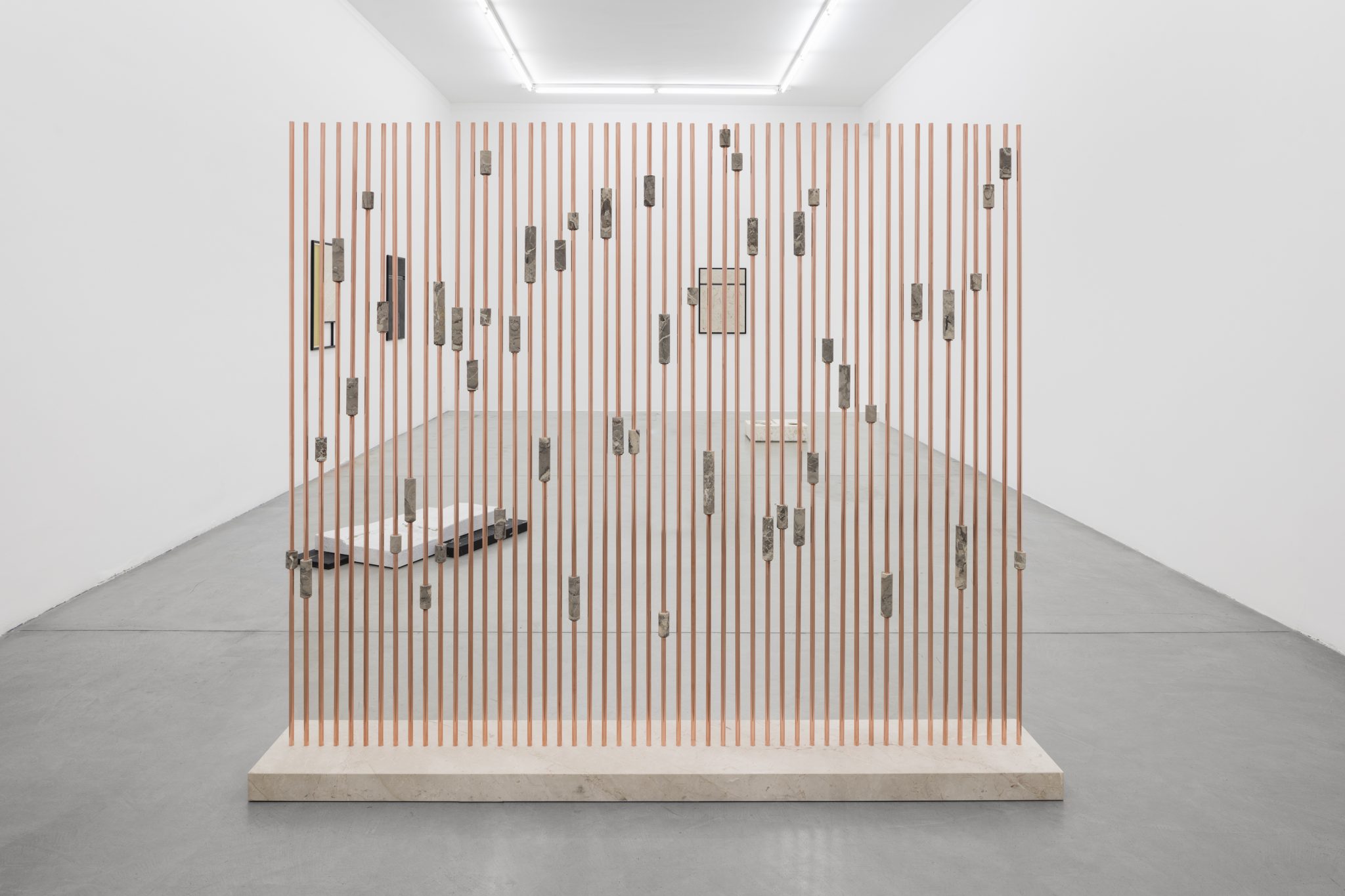16/11 - 23/12, 2016
-
Elena Damiani
Flow Structures
The multiplicity of networks and successive interrelated layers that compose the Earth – stratum upon stratum – suggest that penetrative fabrics construct the underground. Porous materials are everywhere around us, in nature and technology. Elena Damiani presents a series of sculptural works which subtly suggest the acidity of space-time against the soft infirmity of matter so as to articulate an image of the composition of the natural world.
The exhibition prompts questions about the materiality of the Earth in order to suggest the interconnectivity of geological elements and the underlying processes that construct our surroundings. The works make reference to geological events such as sedimentation and filtration, revealing the permeable character of unconsolidated materials and the porous mechanics of the Earth. They highlight the interaction between flow structures, travelling sediments and unconformities in morphology that compose a dynamic surface and underground of a body that is not bounded in a well-defined way. In doing so a series of sculptural works are displayed as overlapping layers acting as filters within the space. They are not composed of solid or compact materials, but of porous mediums, which remain unconsolidated allowing light fluxes and generative liminal spaces between them.
Upon entering, the work Blind (after Bertoia) – composed of a series of copper tubes arranged in one line on a marble base – stands as the first layer in the exhibition. The work takes as its starting point Harry Bertoia’s sculpture Untitled (Monumental Sonambient) from the Standard Oil Commission, 1975. The metal structure has alternating marble cylinders placed at different heights as a screen which separates the entrance of the gallery from the main exhibition space. The small pieces of marble and vertical voids create a constant shifting light that oscillates on the copper surfaces.
The two geometric compositions resting on the floor are evocative of processes of filtration and erosion reflecting upon the firmness of inorganic materials. The travertine and concrete slabs exhibit surfaces full of small cavities characteristic of pervious materials. Unsaturated mudcrack is a rectangular work composed of three juxtaposing elements displaying a fissured surface. The collapsed concrete slab reveals an inner wire mesh in brass. In Casting voids two pieces casted in brass rest on a travertine base on the floor. The peculiar morphology of the travertine presents a network of interconnected channels of non-uniform sizes and shapes. The surface of the porous solid has been partially casted in brass as positive volumes mapping the empty spaces between the rock sediments.
The series Filters are collaged stone slices of different densities that ask for a closer reading of surfaces. They testify to the presence of crusts and exchange of materials within a layered underground. The juxtaposition of solid stone sections, small metal inserts and hollow space presents us with parts of wholes, configurations and contexts.
Finally the work entitled Partition displays brass meshes and travertine surfaces with different opening sizes in a metal structure similar to a room divider. The translucent brass panels and spongelike stone pieces dominated by layers of shrub fabric filter light through intertwined patterns prompting the permeable nature of both artificial and natural constructs.
Damiani’s works stand still as rock records which draw attention to the action of large natural forces in small-scaled surfaces constructing a micro-macro representation of an ever-changing realm. The Earth’s flows and forces give rise to new interconnected dynamic structures where materials mobilize continuously in a network of infinite unconformities.
The multiplicity of networks and successive interrelated layers that compose the Earth – stratum upon stratum – suggest that penetrative fabrics construct the underground. Porous materials are everywhere around us, in nature and technology. Elena Damiani presents a series of sculptural works which subtly suggest the acidity of space-time against the soft infirmity of matter so as to articulate an image of the composition of the natural world.
The exhibition prompts questions about the materiality of the Earth in order to suggest the interconnectivity of geological elements and the underlying processes that construct our surroundings. The works make reference to geological events such as sedimentation and filtration, revealing the permeable character of unconsolidated materials and the porous mechanics of the Earth. They highlight the interaction between flow structures, travelling sediments and unconformities in morphology that compose a dynamic surface and underground of a body that is not bounded in a well-defined way. In doing so a series of sculptural works are displayed as overlapping layers acting as filters within the space. They are not composed of solid or compact materials, but of porous mediums, which remain unconsolidated allowing light fluxes and generative liminal spaces between them.
Upon entering, the work Blind (after Bertoia) – composed of a series of copper tubes arranged in one line on a marble base – stands as the first layer in the exhibition. The work takes as its starting point Harry Bertoia’s sculpture Untitled (Monumental Sonambient) from the Standard Oil Commission, 1975. The metal structure has alternating marble cylinders placed at different heights as a screen which separates the entrance of the gallery from the main exhibition space. The small pieces of marble and vertical voids create a constant shifting light that oscillates on the copper surfaces.
The two geometric compositions resting on the floor are evocative of processes of filtration and erosion reflecting upon the firmness of inorganic materials. The travertine and concrete slabs exhibit surfaces full of small cavities characteristic of pervious materials. Unsaturated mudcrack is a rectangular work composed of three juxtaposing elements displaying a fissured surface. The collapsed concrete slab reveals an inner wire mesh in brass. In Casting voids two pieces casted in brass rest on a travertine base on the floor. The peculiar morphology of the travertine presents a network of interconnected channels of non-uniform sizes and shapes. The surface of the porous solid has been partially casted in brass as positive volumes mapping the empty spaces between the rock sediments.
The series Filters are collaged stone slices of different densities that ask for a closer reading of surfaces. They testify to the presence of crusts and exchange of materials within a layered underground. The juxtaposition of solid stone sections, small metal inserts and hollow space presents us with parts of wholes, configurations and contexts.
Finally the work entitled Partition displays brass meshes and travertine surfaces with different opening sizes in a metal structure similar to a room divider. The translucent brass panels and spongelike stone pieces dominated by layers of shrub fabric filter light through intertwined patterns prompting the permeable nature of both artificial and natural constructs.
Damiani’s works stand still as rock records which draw attention to the action of large natural forces in small-scaled surfaces constructing a micro-macro representation of an ever-changing realm. The Earth’s flows and forces give rise to new interconnected dynamic structures where materials mobilize continuously in a network of infinite unconformities.
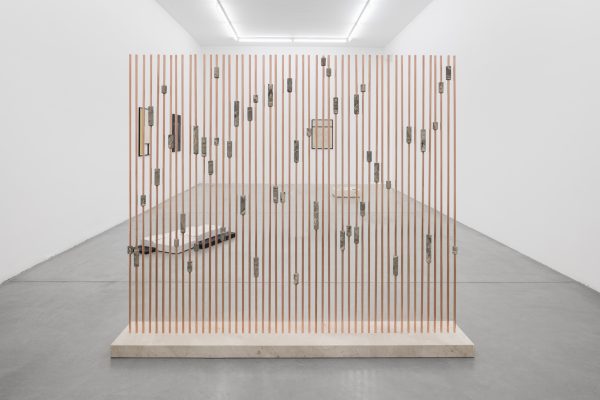 Blind (After Bertoia), 2016Breccia Chiara marble, Breccia Marina marble, copper
Blind (After Bertoia), 2016Breccia Chiara marble, Breccia Marina marble, copper
200×234×34 cm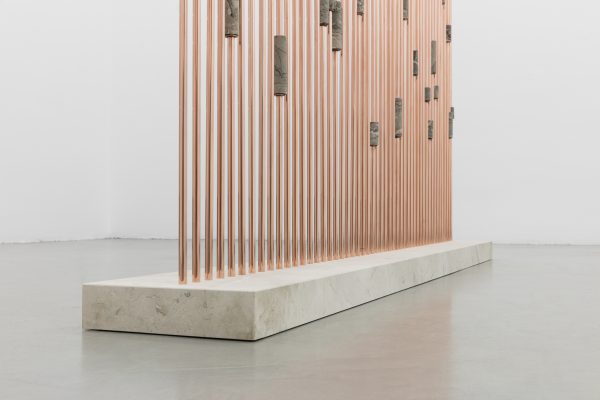 Blind (After Bertoia), 2016, detailBreccia Chiara marble, Breccia Marina marble, copper
Blind (After Bertoia), 2016, detailBreccia Chiara marble, Breccia Marina marble, copper
200×234×34 cm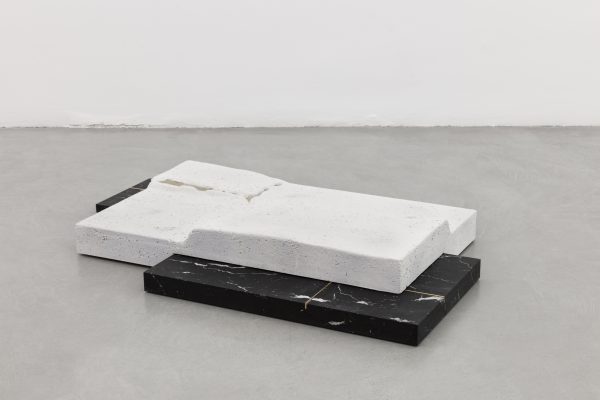 Unsaturated Mudcrack, 2016, view 1concrete mix, Nero Marquina marble, brass
Unsaturated Mudcrack, 2016, view 1concrete mix, Nero Marquina marble, brass
15×123×76 cm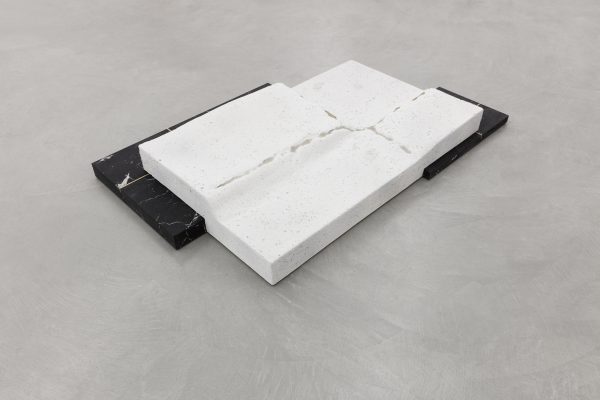 Unsaturated Mudcrack, 2016, view 2concrete mix, Nero Marquina marble, brass
Unsaturated Mudcrack, 2016, view 2concrete mix, Nero Marquina marble, brass
15×123×76 cm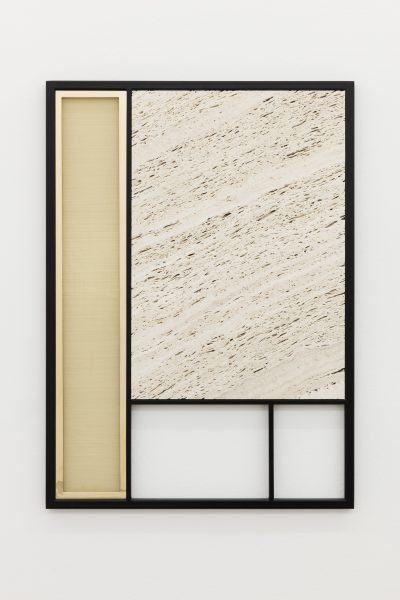 Filter N1, 2016Santa Caterina travertine, brass, steel
Filter N1, 2016Santa Caterina travertine, brass, steel
90×65×3 cm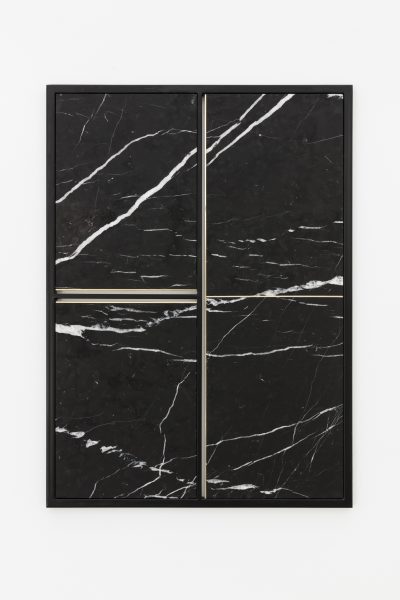 Filter N2, 2016Nero Marquina marble, brass, steel
Filter N2, 2016Nero Marquina marble, brass, steel
90×65×3 cm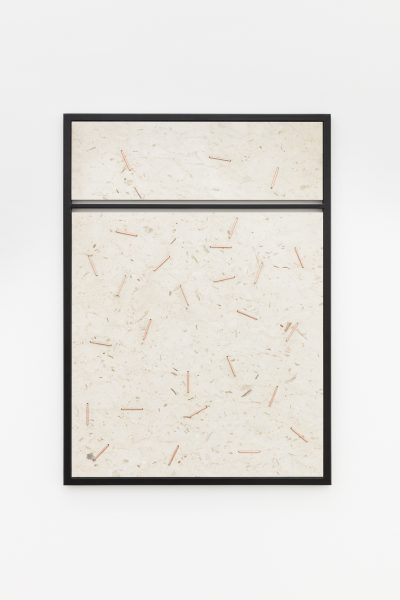 Filter N3, 2016Perlato Siciliano marble, copper, steel
Filter N3, 2016Perlato Siciliano marble, copper, steel
90×65×3 cm
cassa
84h x 109 x 18 cm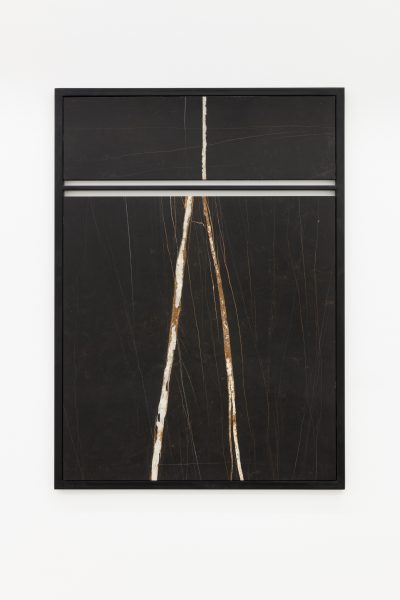 Filter N4, 2016Sahara Noir marble, steel
Filter N4, 2016Sahara Noir marble, steel
90×65×3 cm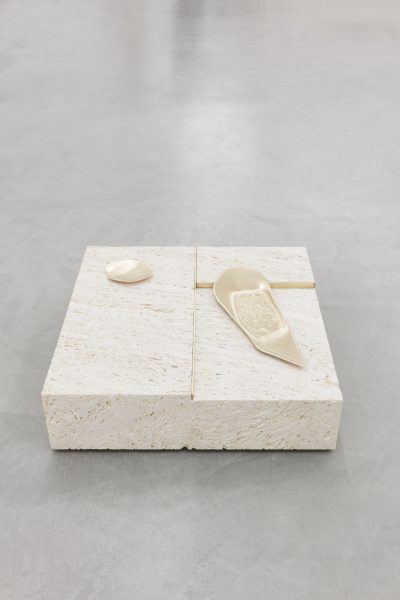 Casting voids, 2016, view 1Santa Caterina travertine, brass
Casting voids, 2016, view 1Santa Caterina travertine, brass
18×60×60 cm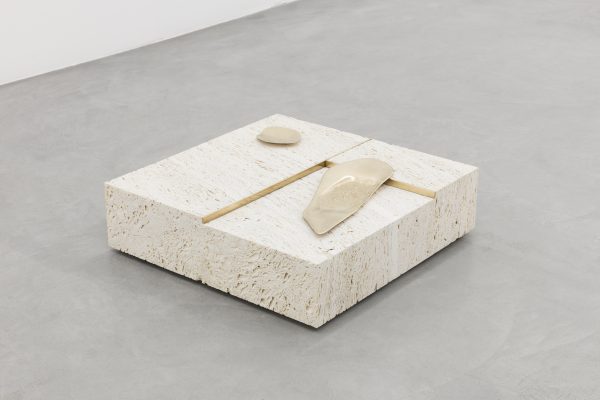 Casting voids, 2016, view 2Santa Caterina travertine, brass
Casting voids, 2016, view 2Santa Caterina travertine, brass
18×60×60 cm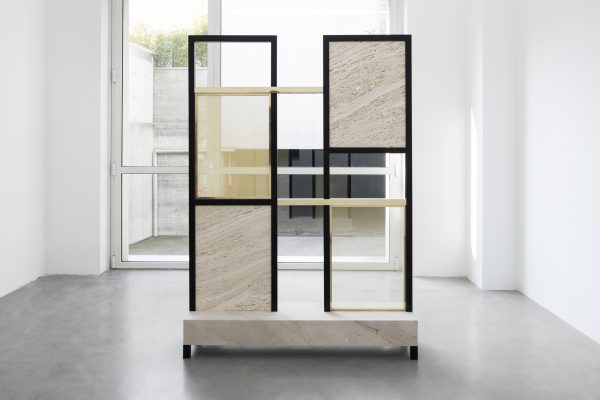 Partition, 2016Breccia Chiara marble, Santa Caterina travertine, steel, brass
Partition, 2016Breccia Chiara marble, Santa Caterina travertine, steel, brass
206×146×30 cm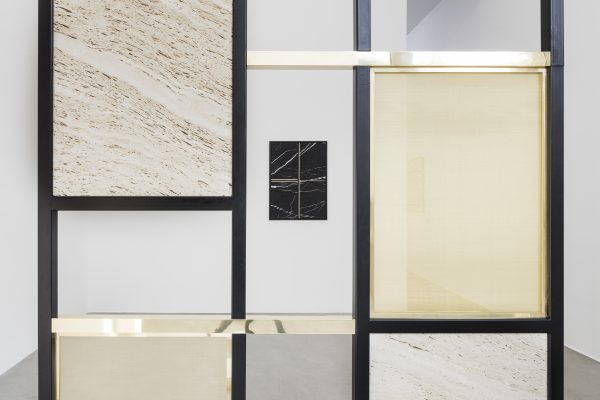 Partition, 2016, detailBreccia Chiara marble, Santa Caterina travertine, steel, brass
Partition, 2016, detailBreccia Chiara marble, Santa Caterina travertine, steel, brass
206×146×30 cm












